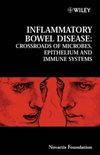Rotavirus RNA replication and gene expression.
引用次数: 35
Abstract
Rotavirus mRNAs are capped but non-polyadenylated and serve as templates for both the synthesis of viral proteins and the segmented dsRNA genome. Viral proteins involved in RNA replication include the RNA polymerase (VP1), the core scaffold protein (VP2) and the non-structural RNA-binding proteins (NSP2 and NSP5). VP2 enhances dsRNA synthesis in vitro, possibly by forming platform structures on which VP1 functions. NSP2 octamers have NTPase and helix-destabilizing activity, and in conjunction with the phosphoprotein NSP5, are proposed to facilitate RNA packaging. The structure of the mRNA template contributes importantly to RNA replication. In particular, base-pairing between the 5' and 3'-ends of viral mRNA generates panhandle structures which promote minus-strand synthesis. For the group A rotaviruses, the 3'-consensus sequence, 5'-UGUGACC-3', which extends as a 3'-tail from the panhandles, also contributes to efficient minus-strand synthesis. Besides containing cis-acting replication signals, the 3'-end of viral mRNAs contains information that stimulates gene expression in infected cells. Specifically, the last four nucleotides of the 3'-consensus sequence, 5'-GACC-3', operate as a virus-specific translation enhancer (3'TE) via a process thought to involve recognition of the element by NSP3. The NSP3-3'TE complex may mimic the function of complexes formed by eukaryotic poly(A)-tails and poly(A)-binding protein, thereby promoting more efficient translation of viral mRNAs.轮状病毒RNA复制和基因表达。
轮状病毒mrna有帽状结构,但未被多聚腺苷化,可作为病毒蛋白合成和片段化dsRNA基因组的模板。参与RNA复制的病毒蛋白包括RNA聚合酶(VP1)、核心支架蛋白(VP2)和非结构性RNA结合蛋白(NSP2和NSP5)。VP2增强体外dsRNA合成,可能是通过形成平台结构,VP1在其上起作用。NSP2八聚体具有NTPase和螺旋不稳定活性,并与磷酸化蛋白NSP5结合,促进RNA包装。mRNA模板的结构对RNA复制起着重要的作用。特别是,病毒mRNA的5'和3'端之间的碱基配对产生了促进负链合成的长柄结构。对于A组轮状病毒,3'-一致序列,5'-UGUGACC-3',作为一个3'-尾从盘柄延伸,也有助于有效的负链合成。除了含有顺式复制信号外,病毒mrna的3'端还含有刺激感染细胞中基因表达的信息。具体来说,3'-consensus序列的最后四个核苷酸5'-GACC-3'作为病毒特异性翻译增强子(3' te),通过一个被认为涉及NSP3对元件识别的过程发挥作用。NSP3-3'TE复合体可能模仿真核多聚(A)尾和多聚(A)结合蛋白形成的复合体的功能,从而促进更有效的病毒mrna翻译。
本文章由计算机程序翻译,如有差异,请以英文原文为准。
求助全文
约1分钟内获得全文
求助全文

 求助内容:
求助内容: 应助结果提醒方式:
应助结果提醒方式:


